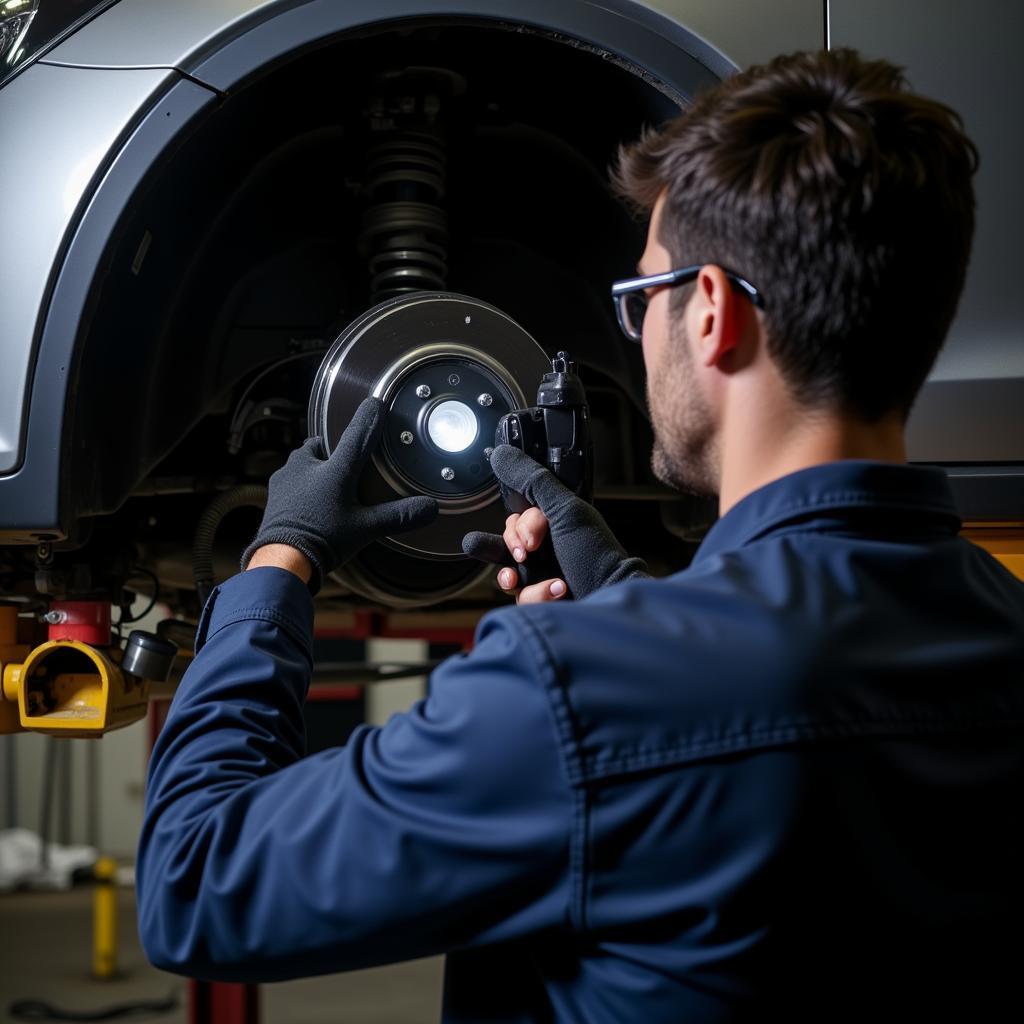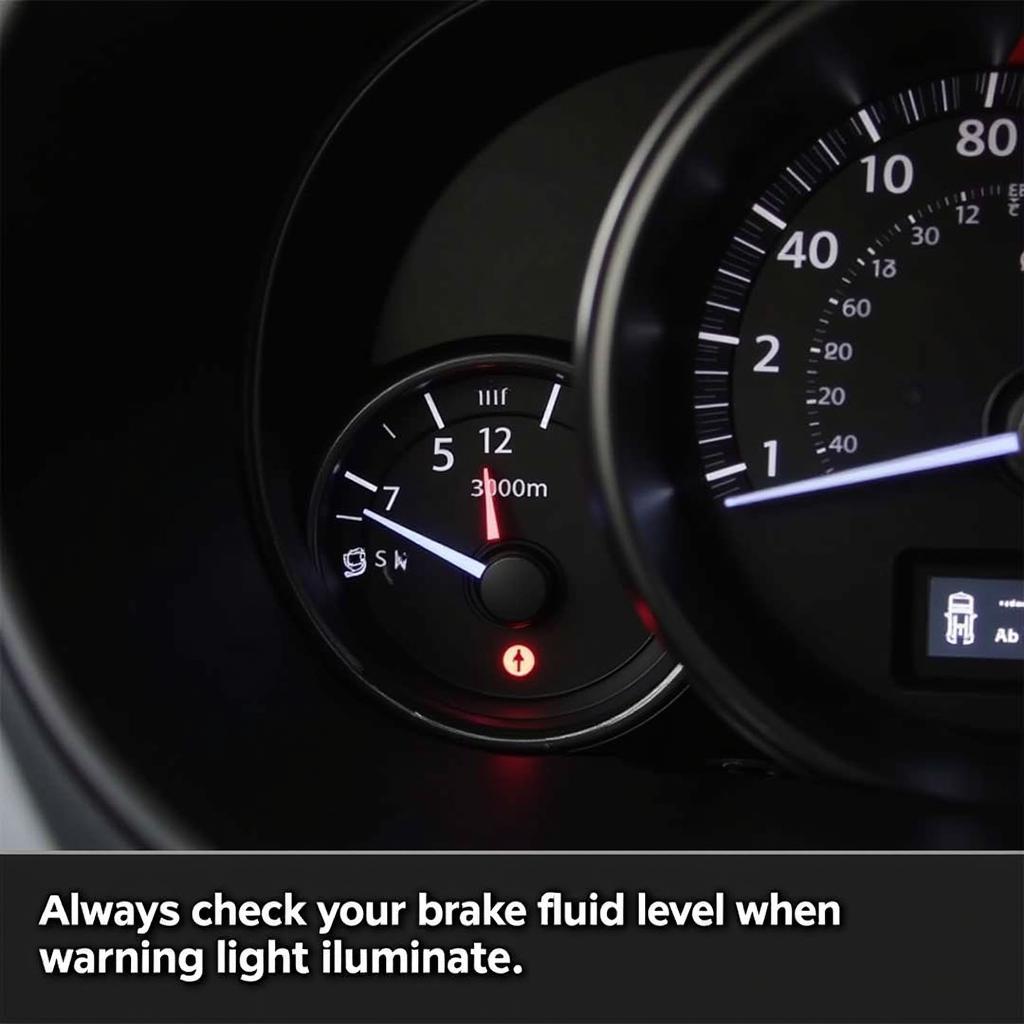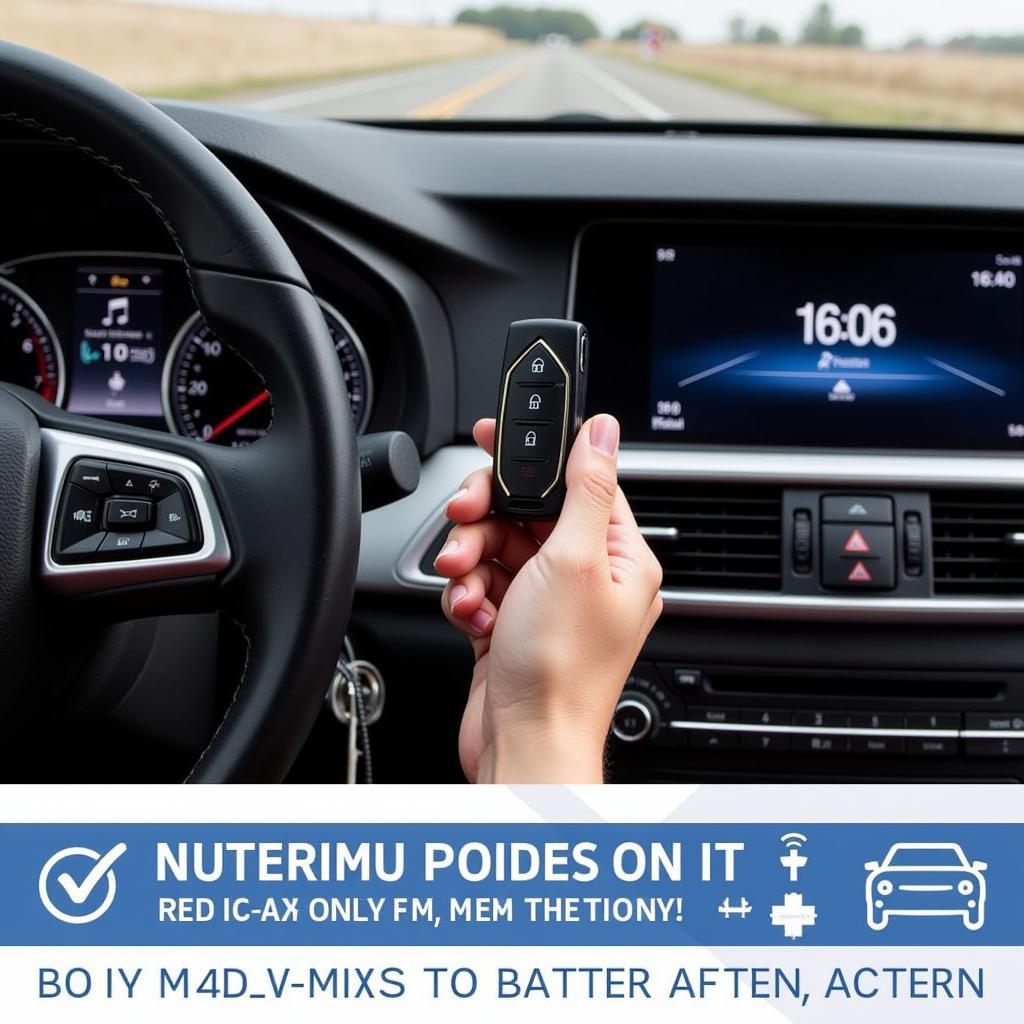A brake warning light illuminating on your 1989 Jaguar’s instrument panel is a serious issue that should never be ignored. This warning typically signals a problem with your vehicle’s braking system, potentially jeopardizing your safety and that of others on the road. While it can be alarming, understanding the common causes and knowing how to troubleshoot this issue can help you address the problem swiftly and efficiently.
Understanding the Brake Warning Light
Your Jaguar’s brake warning light serves as a crucial safety feature, alerting you to potential malfunctions within the braking system. When this light comes on, it doesn’t necessarily mean your brakes have failed completely. However, it does indicate a problem requiring immediate attention from a qualified mechanic.
Common Causes of Brake Warning Lights in 1989 Jaguars
Several factors can trigger the brake warning light on your classic Jaguar. Here are some of the most common culprits:
1. Low Brake Fluid Level
This is often the primary cause. Brake fluid is the lifeblood of your car’s braking system, transmitting the force from your foot on the pedal to the wheels, ultimately stopping the vehicle. A leak anywhere in the system can lead to a drop in brake fluid level and trigger the warning light.
2. Worn Brake Pads
Brake pads are designed to wear down over time. As they do, the brake caliper piston extends further to compensate, requiring more brake fluid. When the pads wear too thin, it can trigger the brake warning light.
3. Faulty Brake Lines or Hoses
Over time, the brake lines and hoses that carry brake fluid can deteriorate, crack, or become damaged. This can lead to fluid leaks and trigger the warning light.
4. Malfunctioning Brake Caliper
The brake caliper houses the brake pads and piston. A sticking or seized caliper piston can cause uneven braking, excessive brake pad wear, and ultimately trigger the warning light.
5. Issues with the ABS System (If equipped)
Some 1989 Jaguars came equipped with Anti-lock Braking Systems (ABS). A malfunctioning ABS system, often indicated by a separate ABS warning light, can also trigger the general brake warning light.
Troubleshooting a Brake Warning Light
While a qualified mechanic is always recommended for brake system diagnosis and repair, here are some initial steps you can take:
-
Check the Brake Fluid Level: Carefully open the brake fluid reservoir (refer to your owner’s manual for location). If the fluid level is low, it indicates a leak that needs immediate attention. Do not drive the vehicle until the leak is repaired and the system is properly bled.
-
Inspect the Brake Pads: If possible, visually inspect your brake pads through the spaces between the wheel spokes. Look for signs of excessive wear or uneven wear patterns.
-
Listen for Unusual Noises: When applying the brakes, listen for any unusual sounds like grinding, squealing, or scraping. These noises can indicate worn brake pads or other issues.
 Mechanic inspecting car brake system
Mechanic inspecting car brake system
Addressing the Issue
If you suspect any problems with your braking system, do not attempt to drive your Jaguar. Instead, contact a qualified mechanic specializing in classic Jaguars. They will have the experience and knowledge to properly diagnose and repair the issue, ensuring your safety on the road.
Expert Insights
“Many owners underestimate the importance of regular brake system maintenance,” says Johnathan Edwards, a seasoned Jaguar mechanic with over 20 years of experience. “Routine brake fluid flushes, timely brake pad replacements, and regular inspections of brake lines and hoses can prevent many common brake problems and ensure the longevity of your Jaguar’s braking system.”
Conclusion
The brake warning light on your 1989 Jaguar is a critical safety indicator that should never be disregarded. By understanding the potential causes and knowing how to react, you can address the issue promptly and keep your classic Jaguar running smoothly and safely. Always prioritize safety by seeking professional assistance for any brake system repairs.


